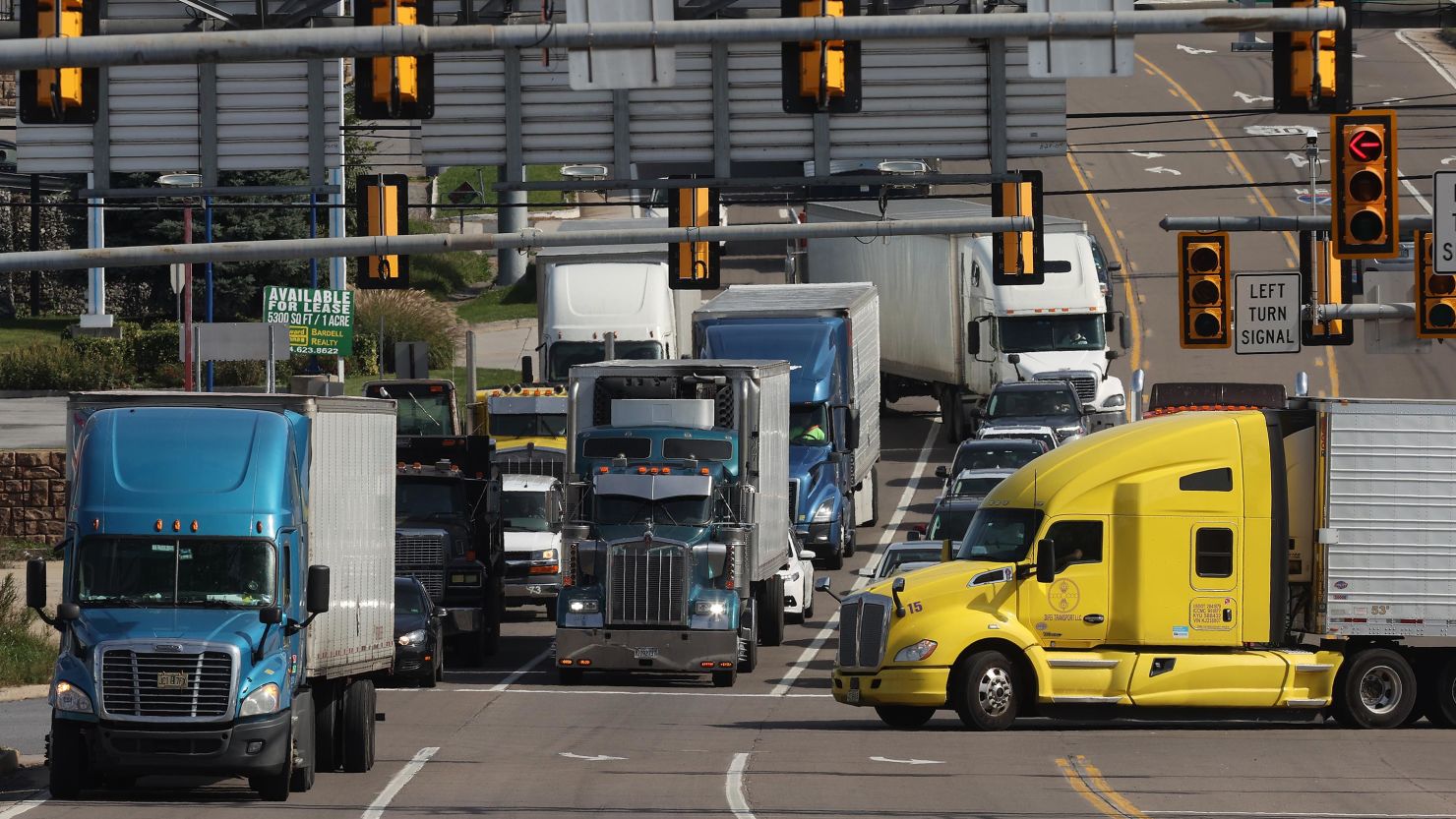Canadian truckers recently shut down North America’s busiest land border crossing to protest Covid-19 mandates. But in the United States, truck drivers have long been frustrated with other problems, like bad pay for long hours and weeks away from home.
Those issues were thrust into the spotlight when the pandemic disrupted supply chains across the globe, leaving many American store shelves empty.
The tough working conditions for long-haul truck drivers in particular make it incredibly difficult to retain drivers, who often leave for other companies or quit the industry altogether. The average annualized turnover rate of long-haul drivers at larger companies was 96% during the third quarter of last year, according to the American Trucking Associations, a trade group. At smaller carriers, the turnover rate was 73%.
The Biden administration has taken several steps to help recruit new drivers and keep experienced ones on the job. The massive infrastructure legislation passed last year also starts to address some of these workforce challenges, but experts say it’s going to take time to rebuild the pipeline of truck drivers.
Long hours, weeks away from home and low pay
For long-haul truckers, the job typically consists of multiday trips in which the driver spends nights away from home and sleeps in the cab of the truck.
The median pay is $47,130 per year, which is higher than the median for all occupations, according to the Bureau of Labor Statistics.
But long-haul truck drivers are typically paid on a per-mile basis, rather than per hour worked, and are also exempt from receiving overtime pay under the Fair Labor Standards Act. That means drivers are only earning money when they are actively driving and not when they are waiting for cargo to be ready for pickup, or while the truck is loaded or unloaded, for example.
Plus, it’s a dangerous job. Compared with the average worker, motor vehicle operators are 10 times more likely to be killed on the job and nearly nine times more likely to be injured on the job, according to a report from the Department of Commerce referencing 2015 data.
Going into debt for training costs
Some long-haul truck drivers fall into debt trying to get the several months of training they need for the job, according to Steve Viscelli, a sociologist at the University of Pennsylvania who studies freight transportation and is the author of the book, “The Big Rig: Trucking and the Decline of the American Dream.”
Some drivers get trained by a trucking company, but sign a contract promising to pay back thousands of dollars in training costs if they leave the job, Viscelli said, calling the situation “debt peonage.”
These barriers to entry have been acknowledged by the Biden administration, which announced an action plan to strengthen the nation’s trucking workforce late last year.
“Too many American truckers are set up to fail with financing schemes or coerced into paying junk fees. To keep our economy moving, we must ensure that truckers who work hard don’t face financial ruin,” said Rohit Chopra, director of the Consumer Financial Protection Bureau, in a recent news release from the administration.
How Biden is trying to improve conditions
The Biden administration’s action plan directs the departments of Transportation and Labor to engage with private partners to expand access to quality truck driving jobs now and in the years ahead. The administration launched a 90-day-challenge, aimed at encouraging private companies and organizations to offer registered apprenticeship programs that provide workers a debt-free path to becoming certified drivers.
The administration is also sending $30 million to states to help them expedite the issuing process for commercial driver’s licenses.
The Infrastructure Investment and Jobs Act, which passed with bipartisan support in Congress in November, included several provisions to address some of the problems with the long-haul truck driver labor market.
It created a new federal Truck Leasing Task Force that will focus on predatory truck leasing arrangements, as well as loans and other arrangements between incoming driver trainees and their training schools or trucking companies. It also calls for a Women of Trucking Advisory Board to help inform efforts to increase the number of women in trucking.
In addition, a new federal pilot program created by the infrastructure legislation lowers the minimum age of truck drivers allowed to cross state lines. The program will allow people as young as 18 years old with a commercial driver’s license and a clean record to take the wheel of interstate trucks under the direct supervision of an experienced driver. The program has yet to start taking applications. Currently, those under 21 years of age are not allowed to drive semis across state lines.
The change aims to help alleviate the worker shortage, but safety advocates have raised concerns about allowing younger drivers to make longer trips.

